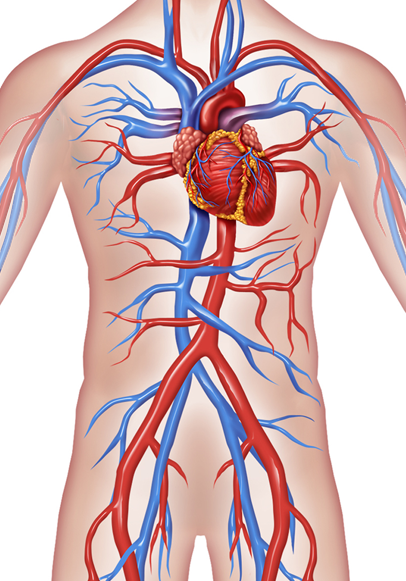Brachiocephalic Artery
It is also called the brachiocephalic trunk or the innominate artery. It is the first and largest branch of the aortic arch (other branches are left common carotid artery and left subclavian artery), in the superior mediastinum (central area in the chest between the lungs). There is no brachiocephalic artery for the left side of the body only one brachiocephalic artery exists to the right, however there are two brachiocephalic veins for each left and right side of the body.
read moreBrachiocephalic Artery
RELATIONS
Following are the relations of this artery at its proximal portion:
-
Posterior to it is anterior and right surface of trachea and fibers of right vagus nerve
-
Right to it is right brachiocephalic vein
-
Posterior and left to it is left common carotid artery
COURSE
From its origin (at the level of right 2nd costal cartilage i.e. cartilage connecting sternum and rib), it passes upward and lateral to the right sternoclavicular joint (joint between sternum i.e. breast bone and clavicle i.e. collar bone), posterior to this joint it divides into its two branches.
Branches and areas of the body supplied by the brachiocephalic artery:
Soon after it emerges from the aortic arch, it divides into the following branches:
-
Right common carotid artery (supplying right side of head and neck).
-
Right subclavian artery (supplying the right arm and hand).
-
Sometimes, a third branch called thyreoidea ima is also present (supplying the thyroid gland).
FUNCTION
Like other arteries of the body, it takes oxygenated and nutrients rich blood away from heart to its specific areas of supply which includes the right arm, hand, neck and face.
CLINICAL ASPECTS
Following can be the common pathological problems associated with this artery:
-
Stenosis (abnormal narrowing in blood vessel).
-
Trauma (damage).
-
Atherosclerosis (hardening and narrowing of blood vessel).
-
Thrombosis (abnormal clot formation in blood vessel leading to its narrowing).
-
Occlusion and aneurysm (balloon like bulge in blood vessel due to its weak walls).
Report Error



